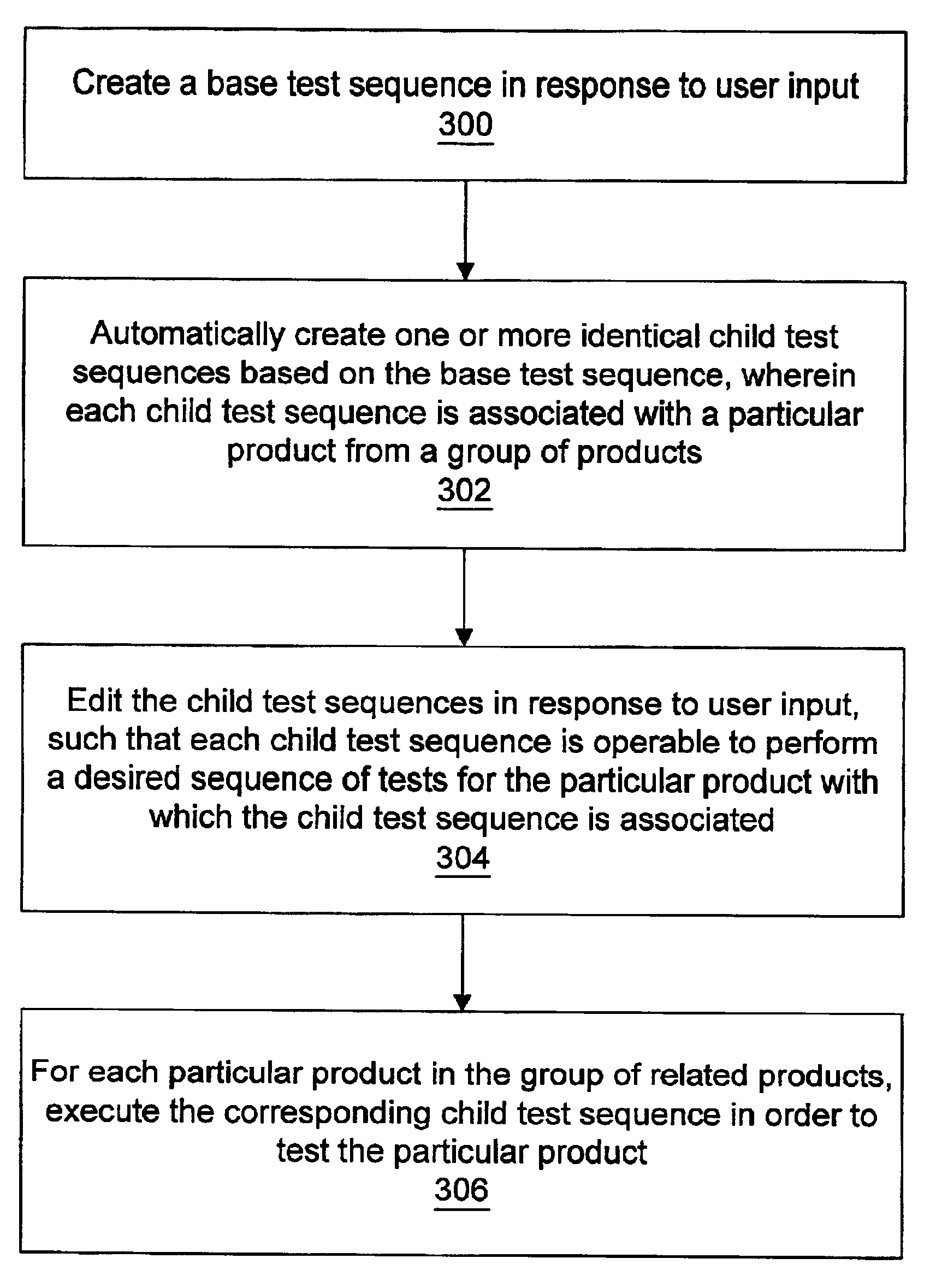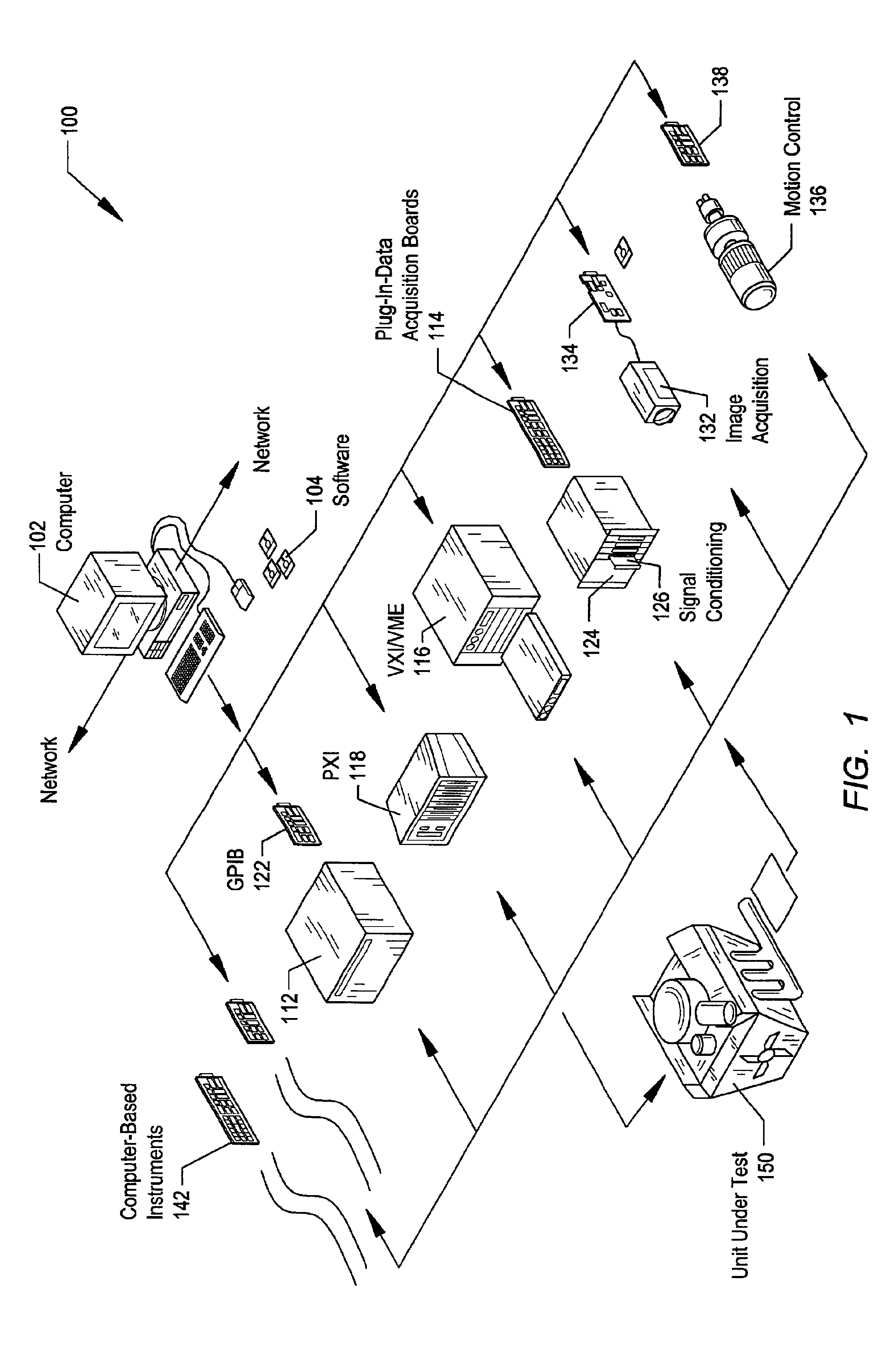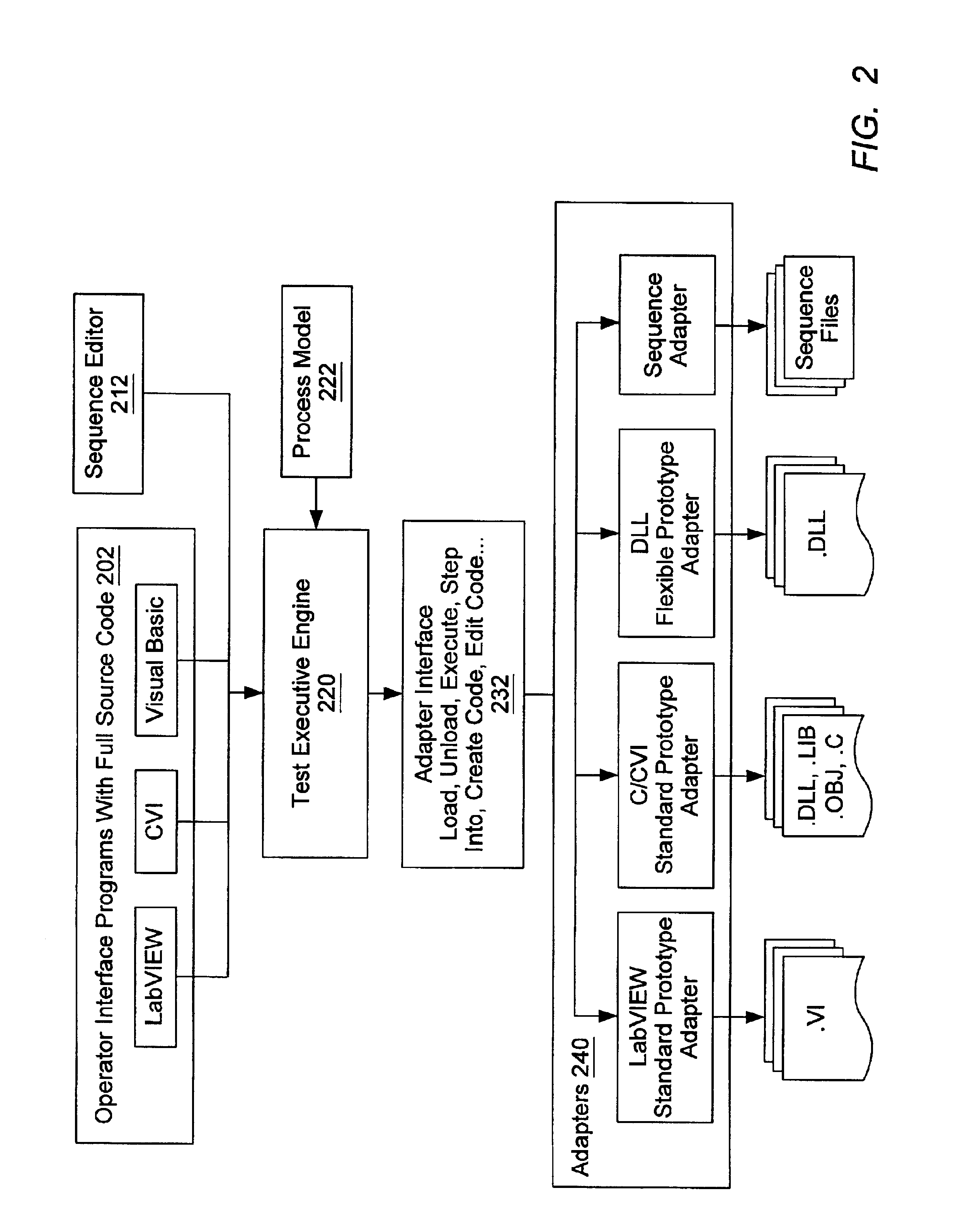System and method for testing a group of related products
a technology of related products and systems, applied in the field of computer-based testing of products or devices, can solve the problems of severe maintenance problems, large duplication of effort in assembling test modules together, etc., and achieve significant efficiency benefits, significant flexibility in the allowed modifications, and save a significant amount of development time
- Summary
- Abstract
- Description
- Claims
- Application Information
AI Technical Summary
Benefits of technology
Problems solved by technology
Method used
Image
Examples
Embodiment Construction
Incorporation by Reference
[0038]The following references are hereby incorporated by reference in their entirety as though fully and completely set forth herein.
[0039]U.S. Pat. No. 6,401,220 titled “Test Executive System and Method Including Step Types for Improved Configurability,” issued Jun. 4, 2002.
FIG. 1—Instrumentation System
[0040]FIG. 1 illustrates an examplary instrumentation control system 100. The system 100 comprises a host computer 102 which connects to one or more instruments. The host computer 102 comprises a CPU, a display screen, memory, and one or more input devices such as a mouse or keyboard as shown. The computer 102 may connect through the one or more instruments to analyze, measure or control a unit under test (UUT) or process 150. For example, the computer 102 may include a test executive application for performing automated tests of the unit under test. As described below, the unit under test may be a product or device from a group of related products or devic...
PUM
 Login to View More
Login to View More Abstract
Description
Claims
Application Information
 Login to View More
Login to View More - R&D
- Intellectual Property
- Life Sciences
- Materials
- Tech Scout
- Unparalleled Data Quality
- Higher Quality Content
- 60% Fewer Hallucinations
Browse by: Latest US Patents, China's latest patents, Technical Efficacy Thesaurus, Application Domain, Technology Topic, Popular Technical Reports.
© 2025 PatSnap. All rights reserved.Legal|Privacy policy|Modern Slavery Act Transparency Statement|Sitemap|About US| Contact US: help@patsnap.com



